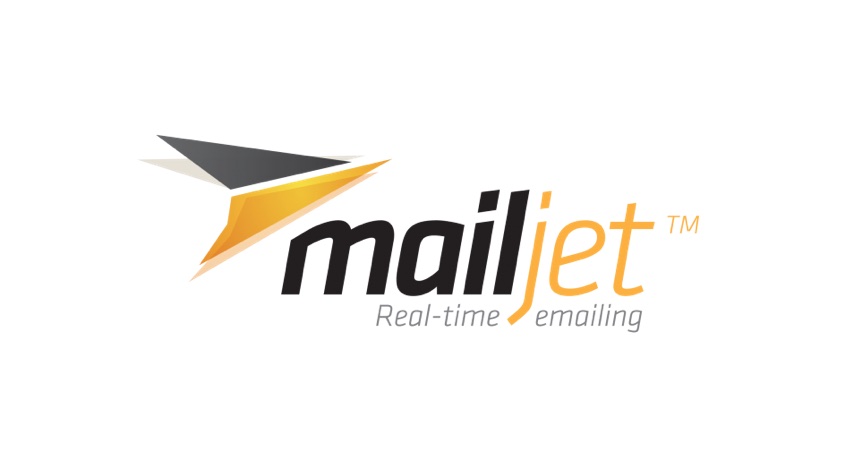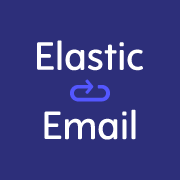Welcome to our in-depth exploration of two leading email marketing tools: Mailjet and Elastic Email. As we navigate the digital marketing landscape of 2024, choosing the right email marketing tool is more crucial than ever. Whether you’re a startup, a growing business, or a seasoned marketer, understanding the strengths and weaknesses of these platforms can significantly impact your marketing strategy. Let’s dive into a detailed comparison, focusing on key features and usability to help you make an informed decision.
| Mailjet | Elastic Email |
|---|---|
 |  |
| G2 Score – 4.0 out of 5 stars | G2 Score – 4.3 out of 5 stars |
| TrustRadius Score – 7.9 out of 10 | TrustRadius Score – 8.0 out of 10 |
User Interface and Experience
In the world of email marketing, the user interface (UI) and overall user experience (UX) are not just about aesthetics; they are about efficiency, ease of use, and ultimately, about how quickly you can turn your ideas into successful campaigns.
Mailjet: Simplicity Meets Functionality
Mailjet’s UI is the epitome of user-friendliness. Picture a tool that welcomes you with open arms, no matter your level of tech-savviness. Its straightforward layout ensures that you won’t get lost in a maze of features. Right off the bat, you can navigate through its options with ease, making the process of setting up campaigns feel like a walk in the park.
The standout feature of Mailjet is its intuitive email editor. It’s a dream for those who aren’t coding wizards or design experts. With its drag-and-drop functionality, creating eye-catching emails is as easy as pie. This editor doesn’t just simplify the process; it makes it enjoyable. You can play around with different layouts, add images, and tweak your design until it resonates with your brand, all without writing a single line of code.
Elastic Email: Versatility for the Experienced User
Elastic Email, on the other hand, takes a slightly different approach. It’s like a toolkit that has everything you could possibly need – if you know where to look. Its UI is packed with features, from advanced analytics to detailed campaign management tools. For the experienced marketer, this is a playground of possibilities.
However, this plethora of options can be a bit overwhelming for beginners. Elastic Email’s strength lies in its customization capabilities and detailed reporting, but it demands a bit more time and effort to master. Navigating through its interface might feel like being a pilot in a cockpit; it’s exhilarating once you know how to fly, but there’s a learning curve.
Choosing Based on UI and UX
Deciding between Mailjet and Elastic Email in terms of UI and UX largely comes down to your personal preference and experience level. If you prefer an email marketing tool that is straightforward, with a gentle learning curve and a focus on efficiency, Mailjet is an excellent choice. It’s perfect for small businesses or individuals who want to create attractive emails quickly and without much fuss.
On the flip side, if you’re a seasoned email marketer who values detailed customization and has the technical know-how to navigate a more complex interface, Elastic Email’s comprehensive platform might be more up your alley.
Automation and Workflow Management
Automation and workflow management are the backbones of any robust email marketing strategy. They determine not only how efficiently you can engage with your audience but also how personalized and impactful your campaigns are. Let’s compare how Mailjet and Elastic Email handle these critical features.
Mailjet: Streamlining Your Email Campaigns
Mailjet offers a user-friendly approach to automation. It’s like having a smart assistant who’s attuned to your needs, ready to take over repetitive tasks so you can focus on the creative aspects of your marketing. With Mailjet, setting up automated emails triggered by subscriber actions, such as sign-ups or purchases, is a straightforward process. This simplicity is a boon for those who want effective automation without getting bogged down in complexity.
Mailjet’s workflow management is equally accessible. It allows you to create and manage email sequences that nurture your subscribers through their journey with your brand. These workflows are easy to set up and manage, ensuring that your emails are timely and relevant without requiring constant manual intervention. It’s particularly useful for small to medium-sized businesses looking for an efficient way to scale their email marketing efforts.
Elastic Email: Tailored Automation for Advanced Users
Elastic Email steps up the game in terms of automation flexibility and advanced features. Picture a tool that’s ready to handle complex, multi-layered marketing strategies. Its automation capabilities are extensive, allowing for highly customized workflows that cater to the nuanced behaviors and preferences of your audience.
With Elastic Email, you can delve into the nitty-gritty of automation, setting up triggers based on a wide range of subscriber activities and tailoring the journey for different segments of your audience. This level of detail in automation is ideal for seasoned marketers who want to craft highly targeted, personalized campaigns that resonate with their audience. However, it requires a deeper understanding of email marketing principles and a willingness to spend more time setting up and fine-tuning your campaigns.
Choosing the Right Tool for Automation
When deciding between Mailjet and Elastic Email for automation and workflow management, consider your specific needs and expertise level. If you’re looking for a tool that simplifies automation, making it easy to set up effective campaigns without needing a deep dive into technicalities, Mailjet is a strong candidate. It’s user-friendly and efficient, ideal for those who want to automate their email marketing with minimal fuss.
On the other hand, if you’re an experienced marketer with complex needs and a penchant for highly customized campaigns, Elastic Email offers the advanced features and flexibility you need. It’s suited for those who are comfortable investing more time and effort into crafting sophisticated, data-driven email strategies.
Email Deliverability and Reliability
Email deliverability and reliability are the linchpins of any successful email marketing campaign. No matter how well-crafted your emails are, they need to reach the inboxes of your audience effectively. Let’s dive into how Mailjet and Elastic Email handle these crucial aspects.
Mailjet: Ensuring Your Emails Reach Their Destination
Mailjet has built a strong reputation around its deliverability. Imagine having a reliable guide who knows the ins and outs of the email landscape, ensuring your messages navigate through the maze of internet service providers (ISPs) and spam filters. This platform uses advanced algorithms and constant monitoring to maximize the chances of your emails landing in the intended inboxes.
A key aspect of Mailjet’s approach is its focus on maintaining a strong sender reputation. This is akin to having a good credit score in the world of email marketing. Mailjet provides tools to monitor your domain and IP reputation, essential for maintaining high deliverability rates. Moreover, their proactive approach to adhering to email sending best practices helps in keeping your campaigns compliant and effective.
Elastic Email: Precision and Personalization in Delivery
Elastic Email approaches deliverability with a keen eye for detail and customization. Think of it as a skilled archer, aiming each email carefully to hit the target. Elastic Email offers robust deliverability features, including detailed analytics and reporting tools that help you understand how your emails perform and what you can do to improve their reach.
What sets Elastic Email apart is its focus on personalization and segmentation. By allowing you to tailor your emails based on subscriber behavior and preferences, you increase their relevance, which is a key factor in avoiding spam filters and improving open rates. Elastic Email also provides options for optimizing send times, ensuring that your emails arrive at the most opportune moment for each segment of your audience.
Choosing for Deliverability and Reliability
When it comes to email deliverability and reliability, both Mailjet and Elastic Email offer strong capabilities, but their approaches cater to different needs. Mailjet is the go-to for those who want peace of mind with a tool that takes care of the technicalities of email delivery, ensuring high deliverability rates without much fuss.
Elastic Email, with its focus on personalized deliverability strategies, is ideal for those who want to dive deeper into data-driven email optimization. It’s suited for businesses or marketers who are comfortable with analyzing data and implementing changes based on those insights to enhance their email campaigns’ effectiveness.

Related: Check out our free SEO suite

Integration and Compatibility
In our fast-evolving digital landscape, the ability of your email marketing tool to seamlessly integrate with other platforms and services is crucial. It’s about ensuring that your email marketing efforts are not isolated but are a synergistic part of your overall business strategy. Let’s delve into how Mailjet and Elastic Email fare in terms of integration and compatibility.
Mailjet: Easy Integration for Streamlined Workflows
Mailjet shines when it comes to integrating with other software and services. Imagine having a tool that easily fits into your existing digital puzzle, connecting effortlessly with your CRM, e-commerce platform, or other marketing tools. This ease of integration is a boon, especially for small to medium-sized businesses that require a straightforward solution that works well with their current systems.
Mailjet offers a variety of plug-and-play integrations with popular platforms such as Salesforce, Magento, and Shopify, among others. This means you can easily sync your email marketing campaigns with your customer data, sales information, and more, without needing extensive technical know-how. Additionally, Mailjet’s API is robust and well-documented, offering the flexibility to create custom integrations if needed.
Elastic Email: Advanced Integration for Diverse Needs
Elastic Email, on the other hand, takes a more comprehensive approach to integration. It’s like a Swiss Army knife, equipped to handle a wide range of integration needs. Elastic Email offers an array of integrations with various platforms, catering to more complex and diverse business requirements.
While Elastic Email’s integration capabilities are extensive, they do require a bit more technical expertise to set up and manage. The platform provides a powerful API that allows for deep customization and integration with your existing systems. This level of integration capability is particularly beneficial for larger businesses or those with a more complex tech ecosystem, where email marketing is just one part of a broader array of digital tools.
Making the Right Choice for Integration
In choosing between Mailjet and Elastic Email for integration and compatibility, consider the complexity of your existing tech stack and your ability to manage integrations. If you prefer a tool that offers simple, straightforward integrations with the most common platforms, Mailjet is an excellent choice. It’s ideal for those who want to quickly and easily connect their email marketing tool with other business applications.
For businesses that require a more comprehensive approach to integration, with the ability to customize and fine-tune how their email marketing tool interacts with other systems, Elastic Email is the better fit. It caters to those who have the resources and technical skills to leverage its advanced integration capabilities.
Customer Support and Resources
In the dynamic world of email marketing, effective customer support and access to a wealth of resources can significantly enhance your experience with a tool. Whether you’re troubleshooting an issue or seeking to expand your email marketing knowledge, the support system a platform offers is vital. Let’s examine the customer support services provided by Mailjet and Elastic Email.
Mailjet: Approachable and Resourceful Support
Mailjet positions itself as a user-friendly platform, not just through its interface but also through its customer support. Think of Mailjet’s support like a friendly guide, ready to assist you whenever you hit a bump in the road. They offer a range of support channels, including email, live chat, and a comprehensive knowledge base.
For beginners and small businesses, this level of support is particularly valuable. You can easily find answers to common questions in their detailed FAQs or tutorials. Moreover, if you encounter a specific issue, their responsive support team is there to help you navigate through it. This accessibility ensures that users can make the most out of Mailjet without feeling overwhelmed or lost.
Elastic Email: Comprehensive but Technical Support
Elastic Email takes a more in-depth approach to customer support. Their resources are extensive, covering a wide range of topics from basic setup to advanced campaign strategies. The platform offers support through email and a rich library of documentation, including guides, API docs, and a community forum.
The depth of Elastic Email’s resources is a boon for the more technically inclined users or those willing to invest time in self-education. However, this approach may be daunting for beginners or those who prefer direct, hands-on assistance. The level of detail and technicality in their support content is excellent for solving complex issues but requires a certain level of expertise to navigate effectively.
Choosing the Right Support System
When deciding between Mailjet and Elastic Email based on customer support and resources, consider your own comfort level with email marketing tools and the kind of support you anticipate needing. If you prefer a platform with accessible, straightforward support and resources that guide you through the process, Mailjet is a great choice. Its user-friendly support system is tailored for ease of use and quick assistance.
In contrast, if you are comfortable with a more self-service approach to support and have the technical know-how to delve into detailed resources, Elastic Email’s extensive and comprehensive support content will be more beneficial. It’s ideal for those who prefer to explore and solve issues independently, armed with in-depth guides and documentation.
Pricing and Value for Money
In the realm of email marketing tools, pricing plays a crucial role in decision-making. It’s not just about how much you pay, but also about the value you get for your investment. Let’s examine how Mailjet and Elastic Email stack up in terms of pricing structures and the overall value they offer.
| Mailjet | Free Plan: Includes up to 6,000 emails per month (with a daily limit of 200) and unlimited contacts. Basic features like email creation and sending are included. Essential Plan: Starting at around $15/month for 15,000 emails per month. This plan removes the daily sending limit and includes online customer support, no Mailjet logo, and sub-accounts. Premium Plan: Starting at around $25/month for 15,000 emails per month. Includes additional features like segmentation, A/B testing, marketing automation, and multi-user collaboration. Custom Enterprise Solutions: Offers custom volume of emails with advanced features and dedicated support. Pricing is custom and based on specific requirements. |
| Elastic Email | Unlimited Email Plan: Offers unlimited email sends per month. Pricing starts at $15/month for up to 5,000 contacts, with increasing rates for more contacts. Pay as You Go Plan: Charges based on the volume of emails sent. Starts at $0.09 per 1,000 emails, with the price decreasing for higher volumes. Email API Plan: Tailored for developers and high-volume senders. Offers robust API with detailed reporting. Pricing is based on volume and specific requirements. |
Mailjet: Affordable Flexibility
Mailjet’s pricing model is designed to cater to a wide range of users, from small businesses to larger enterprises. It’s like a café with a menu that offers both budget-friendly options and more elaborate choices. They offer a free plan, which is quite generous in terms of the features it includes, making it an excellent choice for those just starting out or with minimal email marketing needs.
As you scale up, Mailjet provides various tiered pricing plans, each offering additional features and capabilities. What’s great about Mailjet’s pricing is the flexibility it offers. You can choose a plan that aligns with your current needs and upgrade as your business grows. This flexibility ensures that you’re not overpaying for features you don’t need, while still having the option to access more advanced capabilities when necessary.
Elastic Email: Comprehensive but Cost-Effective
Elastic Email also offers a competitive pricing structure, particularly appealing for those who have specific, high-volume emailing needs. Their pricing model is akin to a buffet – you pay based on how much you consume. Elastic Email’s pay-as-you-go option is particularly attractive for businesses with fluctuating emailing needs, as it allows them to pay only for the emails they send.
Moreover, Elastic Email provides monthly plans that can be more cost-effective for businesses with regular, high-volume emailing requirements. These plans include a range of features and capabilities, making them suitable for more advanced users who need comprehensive tools at their disposal.
Making the Best Choice for Your Budget
Choosing between Mailjet and Elastic Email in terms of pricing and value depends on your specific needs and budget constraints. If you’re looking for an affordable, flexible solution that allows you to start small and scale as needed, Mailjet’s tiered pricing plans offer great value. It’s ideal for businesses that are growing or those who want to keep their costs in check while still accessing a robust set of email marketing tools.
On the other hand, if your email marketing demands are high or fluctuate significantly, Elastic Email’s pay-as-you-go or monthly plans can offer better value. They are well-suited for businesses with high-volume emailing needs who require a comprehensive set of features without a significant financial commitment.
Conclusion
As we conclude our detailed exploration of Mailjet and Elastic Email, it’s clear that both platforms bring distinct strengths to the table, catering to different needs and preferences in the realm of email marketing. Mailjet emerges as a highly user-friendly and flexible option, perfect for small to medium-sized businesses or those just starting their email marketing journey. Its intuitive interface, straightforward automation, and tiered pricing make it an accessible choice for users seeking efficiency and scalability without complexity. Mailjet is like a reliable and adaptable companion, guiding you through your email marketing journey with ease and simplicity.
Elastic Email, on the other hand, stands out for its robust features and advanced customization capabilities, appealing to users with more technical expertise or specific, high-volume email needs. Its comprehensive tools, detailed analytics, and flexible pricing, especially the pay-as-you-go model, make it a strong candidate for businesses or marketers looking for depth and versatility in their campaigns. Elastic Email is akin to a powerful toolbox, equipped to handle diverse and complex email marketing strategies with precision.
Ultimately, the decision between Mailjet and Elastic Email hinges on your individual requirements, expertise level, and the nature of your email marketing campaigns. Whether you prioritize ease of use and scalability or seek advanced features and customization, both platforms offer solid foundations to empower your email marketing endeavors in 2024.
Read Next
- Email Marketing for Events and Webinars: Boosting Attendance and Engagement
- The Role of Mobile Optimization in Email Marketing Success
- Email Marketing Metrics that Matter: Tracking Success and ROI
- Harnessing the Power of Interactive Content in Email Campaigns
- The Future of Email Marketing: Predictions and Trends to Watch






















Comments are closed.